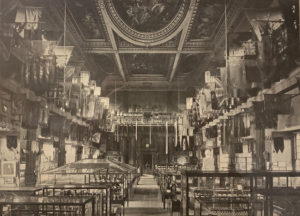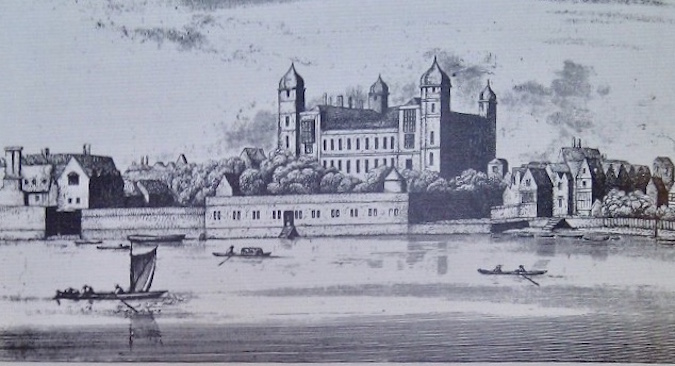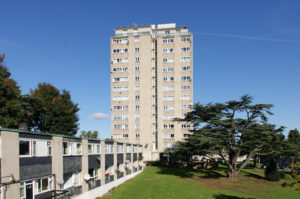The horror of the Grenfell Tower fire prompted a range of rapid judgements, some of which no longer appear sound. Might these include Wandsworth Council’s decision to install water sprinklers in every housing block it owns of ten or more storeys in height?
That is certainly the view of at least some residents of the 99 buildings in the borough lined up for this form of fire safety retrofitting. Do they have a point? Will Wandsworth succeed in putting its plans into effect? If it does, who will meet the cost of implementing them? What are the wider rights and wrongs of a swift council action that has led to a long-running dispute?
Wandsworth took its decision to retrofit sprinklers within ten days of the awful tragedy in North Kensington, which claimed 72 lives. Council leader Ravi Govindia told the Evening Standard at the time that although he did not think there was a “specific risk to any of our high rise properties, we are simply not prepared to take a chance”. He pledged that sprinklers would be fitted to every one of the roughly 6,400 homes concerned “as quickly as possible”. A council officer’s report said installing sprinklers would “give a measure of reassurance” to those living in the blocks.
Local fire chief Darren Munro, also quoted in the Standard, welcomed the council’s move. However, it soon became apparent that not every resident Wandsworth wished to reassure was enthused by the announcement. The council approved the move in September and set aside £30 million to pay for the work. Then, in November, it said: “While council tenants will not need to pay a penny towards the overall bill, leaseholders who have bought their homes would be required to pay a modest share of the cost”. About 2,350 of the 6,400 homes are owned by leaseholders, the majority of whom live in them. They all found themselves looking at possible bills of £3,000-£4,000, to be paid through an increase in their service charges. This didn’t seem “modest” to some of them.
Govindia wrote to Chancellor Philip Hammond, asking for “specific financial aid for Wandsworth leaseholders,” to help them pay their share of the cost of installing sprinklers in their homes. As yet, this has not been forthcoming. And soon, other objections were being raised by residents. It was argued that fire brigade inspections had found no cause for concern and that Grenfell did not alter that fact, not least because (with two exceptions) none of the 99 Wandsworth blocks were encased in combustible cladding and that, in any case, there was no clear agreement that the presence of internal sprinklers would have made any significant difference to the progress of the Grenfell blaze. Also, the council’s right to raise leaseholder service charges for this particular purpose was questioned.
Seeking a resolution of the latter issue, in January 2018, Wandsworth decided to refer its decision upwards to the relevant national government body, its First Tier Property Tribunal (FTPT), for an adjudication. This was not about whether installing sprinklers was a good idea, but whether Wandsworth is entitled to charge leaseholders for doing so. However, debate about sprinklers in the Grenfell context continued.
In May 2018, James Brokenshire, secretary of state for housing, communities and local government, said in response to Dame Judith Hackitt’s post-Grenfell fire safety review, that “Sprinklers can be an effective fire safety measure, but they are one of many such measures that could be adopted and…no single fire safety measure, including sprinklers, can be seen as a panacea.” (see page three of safety review report via here). However, the following July, as Wandsworth was quick to note, the Commons housing select committee, also addressing the Hackitt Review, concluded that the retrofitting of sprinklers should take place everywhere. Hackitt herself had told the committee there is a “clear case” for doing so with older blocks.
Meanwhile, leaseholder discontent continued. In October 2018, the Wandsworth Times reported on opposition from different parts of the borough to what one leaseholder called “a blanket policy across all the tower blocks and a knee-jerk reaction to Grenfell”. Nonetheless, in December, Wandsworth made its formal statement of case to the Property Tribunal, arguing that it has the right to install the sprinklers in the leaseholders’ flat and that leaseholders are obliged to pay, as part of their service charge, “the relevant proportion of the cost of fitting a sprinkler system in the block”. In this document, the council’s estimate of the cost to each lessee was put at “between £3,500 and £5,000”.
By then, the leaseholders were sorting out on their own position, supported by local councillors. These included the considerable figure of Malcolm Grimston, formerly a long-serving Conservative councillor who left the party in autumn 2014 and went on to hold his seat in West Hill ward in May last year, standing as an Independent and easily topping the poll. Ten of the 99 blocks are in West Hill. Grimston assisted the leaseholders with compiling their case, now submitted, arguing, among other things, that the council’s actions fall foul of the so-called “Wednesbury principles” – a reference to a 1948 test case of a public authority’s reasonableness.
The leaseholders asked the Tribunal for more time for preparation. Last month, they were given an extension until September. Among those celebrating was one of Grimston’s fellow West Hill councillors, Labour’s Angela Ireland, who is also involved with a local residents’ association. And so, nearly two years on, Wandsworth’s quick decision to install sprinklers “as quickly as possible” in response to Grenfell is still some way from being implemented.
The story has highlighted a number of important issues and, arguably, produced a few ironies too. Malcolm Grimston believes the council has brought its troubles on itself, initially by taking a very big decision without consulting any of those affected, including its own tenants, who, after all, comprise the vast majority of the residents of the 99 blocks. Attention has been focused on unhappy leaseholders, particularly the resident ones (about 1,000 are non-resident), but Grimston says many of the council’s tenants are unhappy too. Although they would not be billed for any future sprinkler works, these can be intrusive and disruptive, causing damage to decoration and furnishings (and, of course, council money spent on this would mean less money for other housing maintenance or improvements in the borough).
“The council has turned the situation into a battle,” Grimston says. “If they had taken a different, more emotionally intelligent approach, which recognised the attachments people feel towards their homes, whether they rent them or own them, a compromise might have been found and residents might even have come round to the idea.” He also wonders if the decision to turn to the Property Tribunal might have been influenced by the approach of last May’s council elections, which Labour had high hopes of winning for the first time since 1974 (they eventually fell a few seats short).
By contrast, Kim Caddy, Wandsworth’s cabinet member for housing, firmly defends the council’s actions, stressing Fire Brigade support and pointing out that retrofitting sprinklers “would bring these high rise properties up to the same safety standard as all newly-built blocks of similar height, where sprinklers have been mandatory since 2007”. She says turning to the Property Tribunal reflects council sympathy with leaseholder concerns, and will clarify the legal position regarding the works and any financial contribution they eventually have to make, “which would be spread over a number of years on an interest-free basis”.
Caddy also emphasises that other local authorities in England have embarked on installing sprinklers in 10-plus storey blocks, making the point that Wandsworth is not alone in thinking this important. In London, these authorities include Croydon, which says it was the very first in the capital to announce such a programme after Grenfell and has spent £10 million retrofitting all homes in 26 blocks. In October, Croydon announced that work on all but three had been completed (the council has been approached for an update). Also, across the river from Wandsworth, Hammersmith & Fulham, earmarked £20 million for a “fire safety plus” package in July 2017, covering tenants and leaseholders alike in blocks over six storeys in height “where sprinklers would improve safety”. It has firmly stated that “we will not be charging leaseholders for installing sprinklers”.
Like Wandsworth, these two London boroughs and others are asking national government to help them with the costs of this and other fire safety improvements post-Grenfell, so far without success. However, although it had begun removing unsafe cladding from its two affected blocks in advance of the government releasing funds to meet the cost of such works last autumn, unlike Croydon and Hammersmith & Fulham, Wandsworth has not proceeded with installing sprinklers. Why that is so is not yet clear – elucidation has been sought – but the sheer number of such blocks in Wandsworth could well be a factor.
There are other angles on this scenario too. For example, a commenter on a Hammersmith & Fulham website page, having established from the council that the cost of sprinklers for leaseholders would be met from the council’s housing revenue account, remarked: “So, ultimately, council tenants will be paying for the sprinklers in the leaseholder flats (unless the government comes up with the money).” Did Wandsworth conclude that such a situation, with so many leaseholders involved, would have been unfair on its high rise block tenants? How might those tenants have reacted had they picked up on the same point?
The Conservative borough has long been a Right To By flagship, as Ravi Govindia pointed out in his plea to the chancellor for funds. Now it finds itself at odds with some of that policy’s beneficiaries because it isn’t yet prepared to pay for the additional fire safety measures it said straight after Grenfell should be taken with all speed. It’s become a rather sticky situation, and what happens next will be intriguing.










